How to descale my iron?

The more family members, the more washing. The more washing, the more ironing is required. As a result, the steam model of the iron cannot withstand the load: instead of steam, water splashes with scale particles appear, and the sole turns from smooth into a kind of sandpaper of an incomprehensible color. A fair question arises: how to save the iron and clean it from scale?
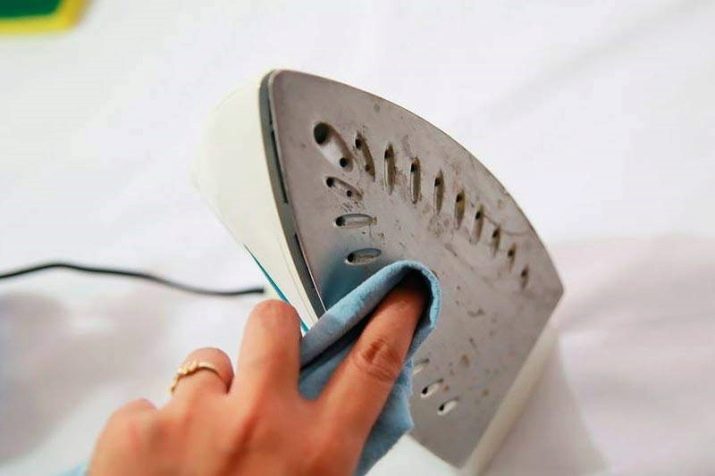
Contamination reasons
To understand how to clean an iron, you need to understand the question of what scale is and why it forms.
Scale consists of hard, insoluble salt deposits (mainly potassium and magnesium). These deposits appear in the process of boiling water and its evaporation, and only salts remain inside the tank.
Therefore, hard water is the cause of limescale. And the tougher it is, the more problems arise.
A layer of hard salts inside the iron results in low thermal conductivity. A dirty iron works 10 times worse than a clean one. In addition, over time, scale particles fall off the inner surfaces and settle in the steam holes, clogging them, or leave the iron together with the steam, settling on clothes. This leads to the appearance of stains on the fabric.
But the sole itself can cause stained clothing. This can happen due to rust that has appeared inside the iron, or due to the mistress's careless attitude towards her unit. Improper use will cause the fabric to stick to the outsole.
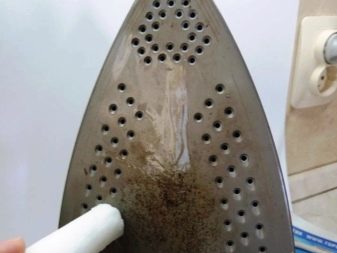

We wash the sole
If the sole still needs cleaning, then this can be done with the help of professional chemicals or home remedies.
Professional special cleaning products for the soleplate of the iron include:
- Cillit for irons - a cleaning agent of the middle price category. To use it, you need to turn on the iron and heat it to the maximum temperature, then disconnect the device from the mains. Turn the machine upside down. Cillit is applied to the steam holes and left for 15 minutes. Dirt that comes out of the holes can be washed off with a soft, lint-free cloth. The iron is washed inside and out.
- Top house - German product for the protection of metal products. It effectively cleans heating devices both internally and externally.
- Special cleaning pencils the surfaces of the iron may have different names, but the principle of their operation is the same. To use it, you need to prepare an old cloth onto which the melted pencil will flow. The appliance is heated to medium temperature and turned upside down. The surface is carefully "painted" with a pencil. The melted product emits a very strong unpleasant odor, so the room must be ventilated. As soon as the carbon deposit begins to melt under the action of the pencil, it is washed off with an unnecessary cloth, turning off the iron. If carbon deposits get into the holes, then they are also rubbed with a product, the iron is turned over and the steaming function is turned on - the dirt flies out of the holes under the action of steam.
To ensure that the melted pencil does not remain on the soleplate, it is convenient to clean it on a cloth placed on the edge of an ironing board or table. Pencil cleaning is very quick and easy. The main drawback of such pencils is a pungent smell.
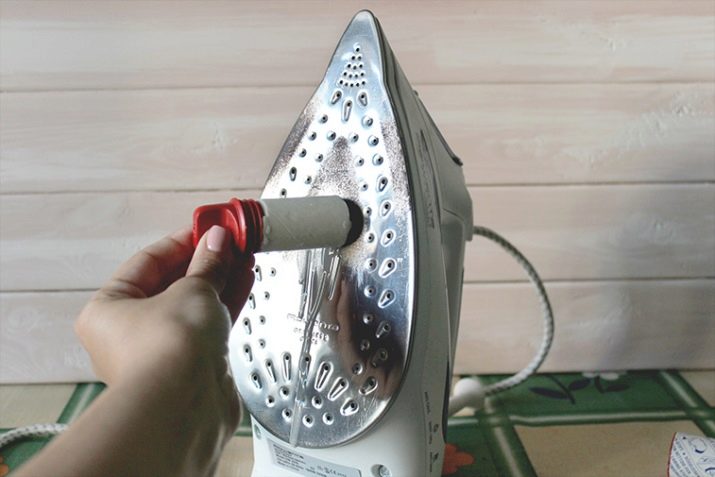
- Any wiper convenient to use for cleaning the base. Using a spray bottle, the liquid containing ammonia is applied to the base. It gets into the holes for the steam outlet, destroying the scale.
- Strong carbon deposits will be cleaned dishwashing powder... But you need to be careful not to scratch the surface.

Home remedies include remedies found in most homes:
- Spread the table salt on the paper in a thin layer. To speed up the process, you can add a little grated paraffin candle. This composition is ironed with a hot iron many times. Dirt from the sole sticks to salt and paraffin. Do not use this product to clean Teflon-coated irons.
- Ammonia is used as follows: an unnecessary piece of cloth is moistened with ammonia and rubbed on the sole. Then the appliance is heated and the fabric is ironed. All carbon deposits remain on the fabric. Repeat the procedure if necessary. Carefully! The ammonia gives off a pungent odor.
- 9% table vinegar is used instead of ammonia.
- Also, vinegar can be used in the following way: soak an unnecessary rag folded in several layers with it. The iron is heated until the temperature reaches the max level, turned off and left on the fabric. After complete cooling, the base is wiped with a soft, lint-free cloth. Steam holes can be cleaned with cotton swabs or toothpicks.
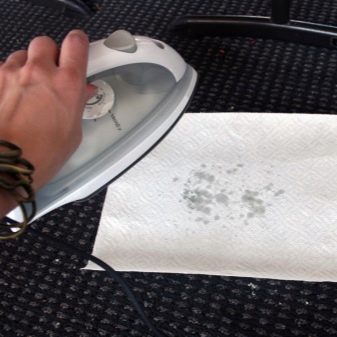

- You can try to clean burnt-on fabric from a very hot iron with a wooden spatula. Do not use metal or plastic tools.
- Soda gruel with water is applied to the cold base of the device. Do not touch for a few minutes. After a short time, the mixture is washed off, and the sole is wiped with a dry soft cloth.
- In a deep baking sheet or basin with a wide bottom, put a few blocks (wood, metal or from the lego constructor). The device, disconnected from the power supply, is placed on the bars so that the nose of the iron is below the back (heel). A solution of hot water and citric acid is poured into a baking sheet (basin) (20 grams of lemon is enough for such a bath). Water should only cover the sole. The appliance is left in this state for about 60-90 minutes.
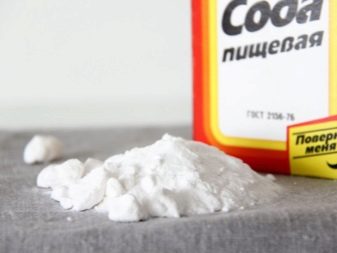
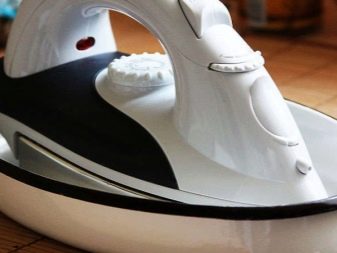
With a large amount of scale, the structure is placed on a gas stove and the water temperature is maintained at a sufficiently high temperature using a low fire. After an hour and a half, the steam release valve is pressed several times.The surface is washed with running water, dried with a cloth. You can use the iron every other day. Ironing begins with old waste fabric.
The same bath can be made not with citric acid, but with table vinegar. The solution will consist of 1 liter of water combined with 2 glasses of 9% vinegar.
In case of severe contamination, it is recommended to use several products at the same time: 2 tablespoons of soda, 1, 5 tablespoons of citric acid and 1 tablespoon of vinegar are diluted with a little water and fill the tray.
It is also good to wipe off dirt from the surface with ordinary lemon. The iron should be slightly warmed up for the lemon juice to work faster.

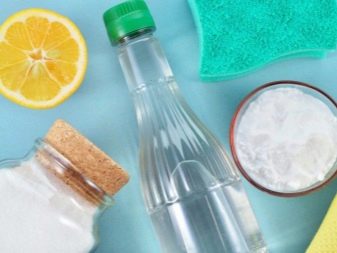
Vinegar and ammonia, mixed in equal proportions, remove yellow stains from the ironing surface. A small amount of the mixture is poured onto a rag and the sole is wiped. If this is not enough, then the fabric is completely impregnated with the composition, after which it is ironed.
150 ml of hot water, 3 teaspoons of liquid dishwashing liquid, 3 teaspoons of ammonia, 2 teaspoons of lemon and 2 teaspoons of hydrogen peroxide are mixed, applied to a metal base, turning the appliance over the handle. The mixture should remain on the ground for half an hour, after which it is washed off.
If carbon deposits come into contact with synthetic fibers, they can be removed with nail polish remover.
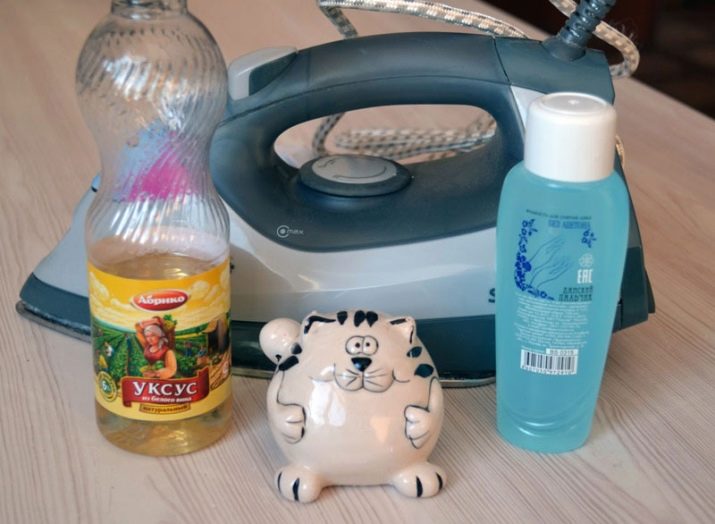
Hydrogen peroxide applied to the surface with a cotton pad will wipe away any dirt. If the carbon deposits are strong, then you need to put the iron on a cloth soaked in a pharmacy product and leave for 2 hours. Then use a hot electric appliance to iron the unnecessary fabric. Instead of peroxide, you can use tableted hydroperite. The heated base is rubbed with tablets. Tweezers are used for safety. A strong, repulsive odor will appear during operation.
Equal parts of baking soda and toothpaste are mixed and applied to the base and metal sides. After drying, remove with a damp cloth and then wash thoroughly. The usual 72% laundry soap will also help the iron. They need to rub the hot sole and leave the appliance to cool completely. The soap is thoroughly washed off the surface with a damp cloth.
An ordinary paraffin candle works on the principle of a pencil against scale. A candle is passed along the hot sole, after which the electrical appliance is disconnected from the network. After cooling, the pieces of paraffin are carefully removed from the surface. The iron is washed well so that the paraffin residues do not get on the clothes.
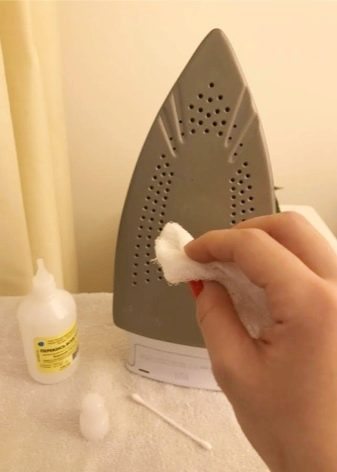
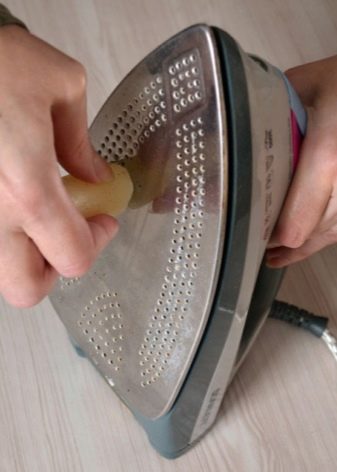
We cleanse from the inside
To clean the inside of the appliance, use "Anti-scale"... The contents of the ampoule are diluted in 200 ml of water, poured into the device and turned on. When it warms up, they turn it off and put the iron on the base, after an hour or two, drain the liquid. If, after rinsing with plain water, it becomes clear that the appliance has been completely cleaned, then the iron is left in a horizontal position for a while. In advanced cases, the procedure with "Anti-scale" is repeated.
As buyers note, the manufacturer made a gross mistake by placing instructions for use inside the package. It is in it that it is indicated that this tool cannot be used for irons equipped with a water purification and softening system. It would be correct to place this important information on the packaging itself.
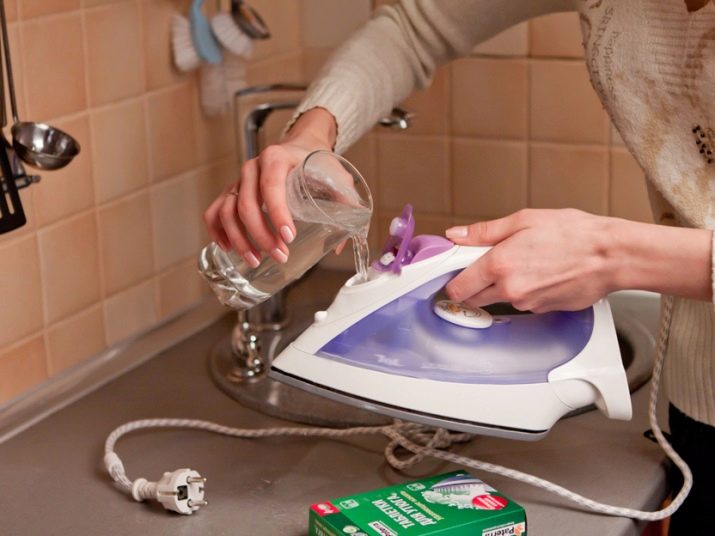
Green & Clean - a product based on natural natural acids. Unique formula Bioklean developed precisely on the basis of these acids. Green & Clean gently dissolves and removes limescale, leaving the surface of your iron intact. It has a cleaning and disinfecting effect on the electrical appliance. The product has a transparent color and a faint odor.
According to the instructions, you need to pour 200 ml into the tank without diluting with water. Heat the iron and press the steam release button. According to users, at this moment, along with the steam, a large amount of scale and dirt really comes out. But all this is accompanied by a very strong pungent odor.Therefore, the product can only be used outside the living space. According to the instructions, after the tank is completely empty, it must be rinsed twice with water, letting off steam. But in fact, this has to be done for several days. Thus, the tool copes well with scale, but at the same time it delivers strong inconvenience to users.
And about the remedy Magic power buyers feedback very well. An inexpensive product does its job perfectly, breaking down scale from the inside and unclogging the steam vents.
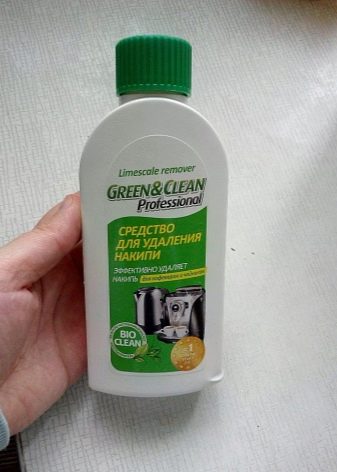
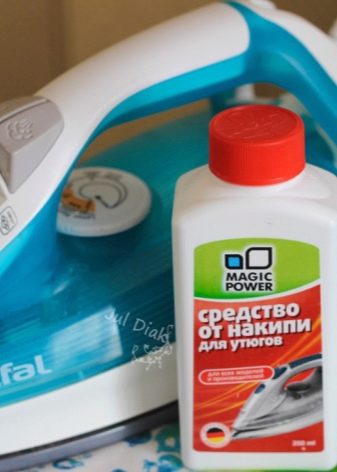
Popular German industrial products (Topperr, Bosch, Filtero 605) are used equally often. Before use, it is important to read the instructions before use. They all have similar rules of application:
- 3 parts of water are combined with 1 part of the product;
- pour the solution into the tank;
- turn on the device in max mode;
- after full warming up, turn off;
- the iron is left in a horizontal position for 2 hours;
- pour out the product and wash it a couple of times with plain water;
- The cleanliness of the tank is checked by blowing off steam before ironing.
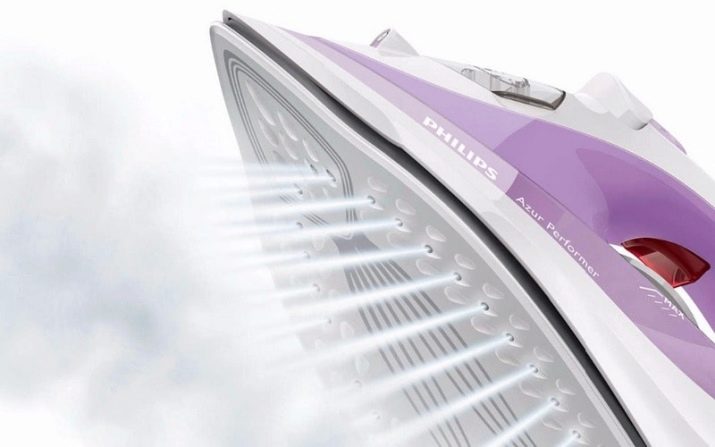
Manufacturers offer kits for descaling the inside and cleaning the sole. It's comfortable. Thus, a complete cleaning can be carried out in one day without having to look for additional products. An example of such a set is Optima Plus. User experience has shown that it is best to use this product without adding water.
The product is poured into the reservoir, the iron heats up, after which the device takes a horizontal position. The rinsing process of an Optima Plus iron can take several hours.
The product perfectly dissolves scale and rust. But this leads to the fact that for several days only dark clothes can be ironed, since yellow-green traces remain on light ones.
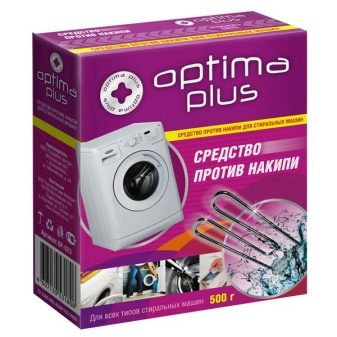
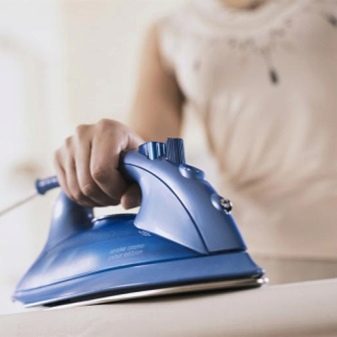
It is also possible to clean the iron inside with home remedies:
- Mineral water is poured inside the appliance. The iron is turned on and heated at full power. By alternately shaking and letting off steam, the tank is freed from scale. Then the procedure is repeated using ordinary water.
- The citric acid will help break down limescale from the inside out. To do this, 25 g of acid is diluted in a glass of hot water and poured into a tank. The switched on iron is shaken several times, alternating with pressing the steam release button. It is better to do this above the container. Re-filling is carried out with plain water. After that, the unnecessary fabric is ironed so that no marks remain on good things.
- When using vinegar, use its solution with water in a 1: 1 ratio, which is poured into the inside of the device. Be careful, this will give off a pungent odor.
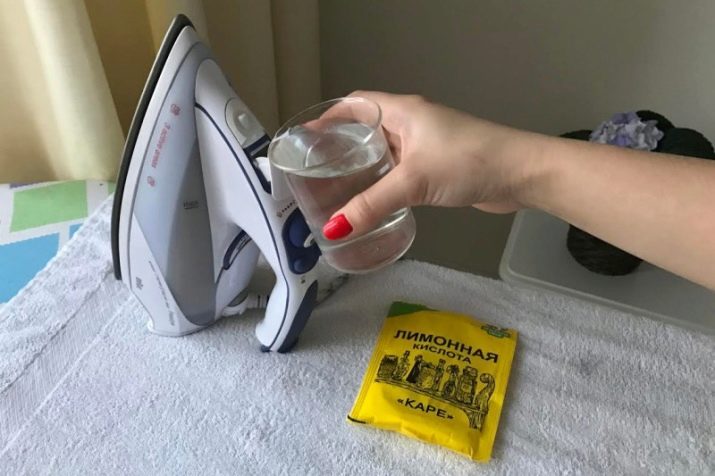
Self-cleaning of the appliance
Many manufacturers have equipped modern steam irons with a self-clean function. Each appliance has detailed instructions, including self-cleaning instructions. Before starting work, you must definitely familiarize yourself with it. It usually includes the following steps:
- Fill the reservoir with water and turn it on to the maximum temperature.
- Heat up and switch off the electrical appliance.
- When the sole cools down, turn on the device again and heat up to maximum.
- Disconnect and press the self-clean button while holding the iron over the container. It is better if it is not a sink, otherwise you will have to descale it too.
- During the heating process, the appliance can be shaken and slightly tilted.
- After emptying the tank, it is filled with plain water and washed.
- The sole is scrubbed from traces of scale.
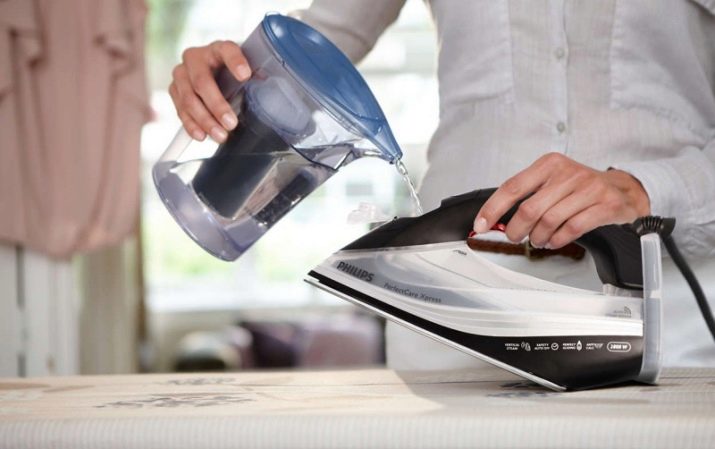
Electrical appliances from German manufacturers Bosch, Braun, Tefal are equipped with an anti-lime rod and a safety valve. They require special care:
- Before cleaning, turn off the iron and drain the water from the container.
- The steam key should be in the up position.
- Pull gently on the key without touching the bottom of the valve.
- Put the part in a vinegar or lemon solution until the limescale separates from the rod.
- Use a natural or synthetic bristle brush to rinse off any remaining lime fragments.
- Wash the rod with running water.
- The rod should be cleaned once a month.
For cleaning steam generators with filters from limescale, do not use vinegar or chemical reagents. The filter is washed with a solution of a special liquid from lime in combination with water. It is offered on the condition of after-sales service.
Manufacturers Bosch and Siemens propose to neutralize scale with an integrated system equipped with a cassette with granules that replace the positive ions of Ca and Mn with negative ones. The developers of the system assure that it will work throughout the entire period of operation of the iron.
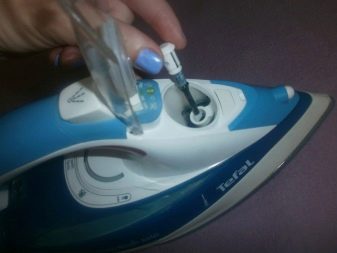
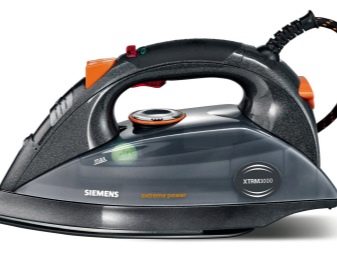
Regular use of the self-cleaning function will eliminate the need for other products. After the procedure, you need to give the iron "rest" so that it does not spoil things as a result of overheating.
Precautionary measures
Scale is often fought with acids and corrosive substances. Since the iron is close to the hands and face during operation, the fumes of these components can get on the skin. Therefore, when cleaning the appliance it is imperative to follow basic precautions:
- The use of gloves (preferably cloth gloves to protect hands from burns), a medical or cloth mask, and safety glasses is recommended.
- The room must be well ventilated. The best option is to perform manipulations on a balcony or street.
- The face should be as far away from the sole as possible when releasing steam.
- Small children and animals should not be in the room during cleaning.
- To avoid damage to the work surface, floor and things, when working with a pencil, there should be a rag at hand with paraffin so that the waste material drips onto it.

Prophylaxis
Cleaning your iron is not a very difficult or time-consuming task. But it can also be avoided by using preventive measures:
- Inspect the anti-limestone core once a month.
- Check the sole with holes for steam outlet every six months for the appearance of traces of scale.
- Experts from Braun, Bosch, Bork, Filips, Tefal, Kerher recommend pouring running water into the container in combination with distilled water (1: 1).
- The use of only distilled water leads to a deterioration in the formation of steam and damage to the inner surface of the appliance.
- When completing work, be sure to pour out the liquid from the reservoir.
- The soleplate of the appliance must be kept clean as well as the steam outlet.
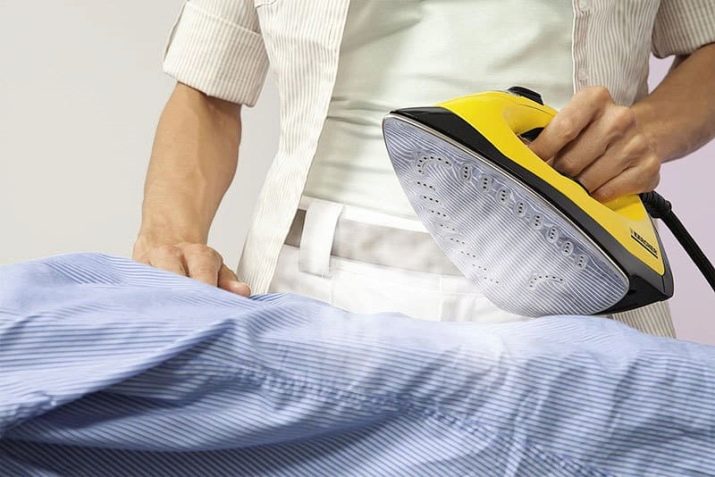
The correct selection of the ironing mode, descaling agents and for cleaning carbon deposits on the sole will keep the iron in working order for a long time.
For information on how to clean the iron from the nipi inside, see the next video.








